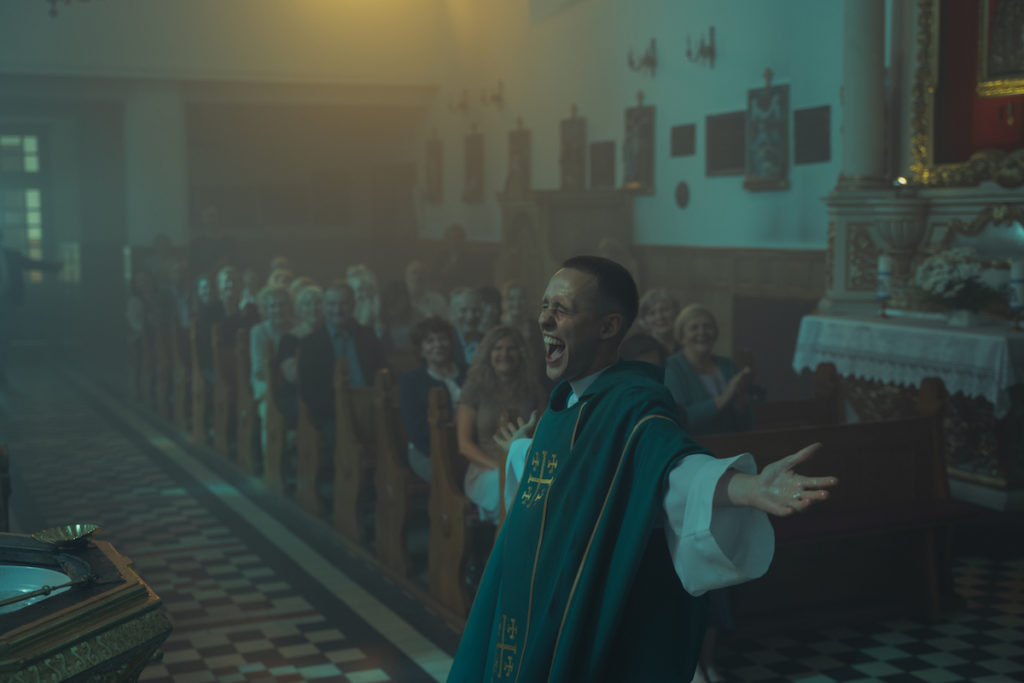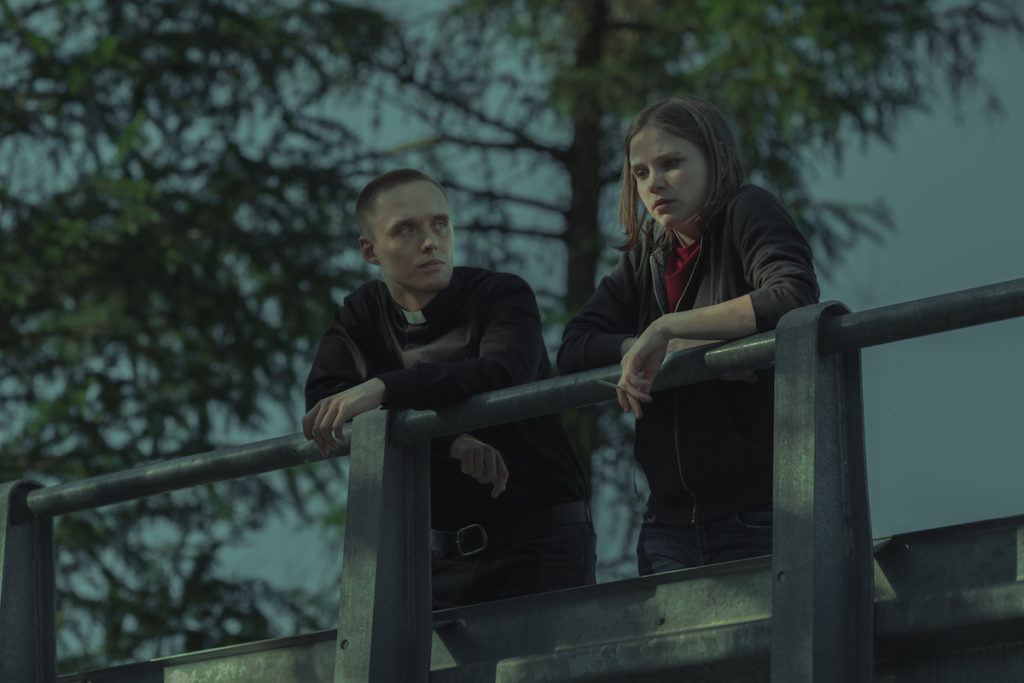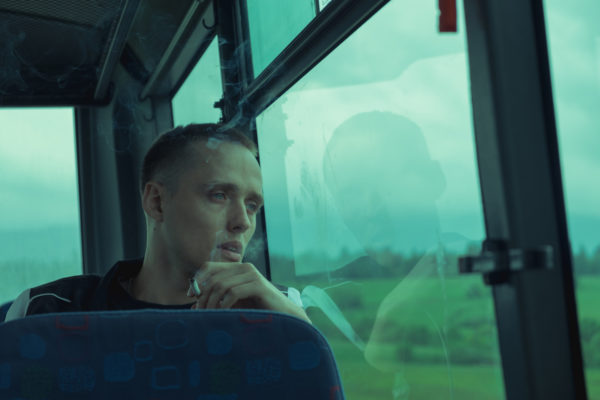Corpus Christi, one of the four worthy features that lost to Parasite in the Oscars’ newly branded International Film category, was inspired by the strange but true case of a young man who successfully posed as a priest for four months in a small rural community in Poland. It’s not the only such case, a phenomenon director Jan Komasa says is worthy of a sociological study.
In fact, Komasa and screenwriter Mateusz Pacewicz deliberately relocated their story to a different part of Poland, but still met resistance from the local town where they settled because it had its own history with an impostor priest who wasn’t unmasked for two years! “I had the strange feeling of being interrogated,” Komasa recalls. “They thought we were going to make a film about that case and we were going to somehow diminish and belittle their village.”

Komasa came to New York last October for a screening of his riveting drama and a Q&A conducted by Alison Willmore of the New York magazine website Vulture. After successful screenings at the Venice and Toronto film festivals, the Film Movement release opens theatrically on February 19 at New York’s Film Forum.
Komasa and Pacewicz’s fictionalized retelling centers on Daniel (the hypnotic Bartosz Bielenia), a troubled young man who’s just been released from a juvenile detention facility and given a job at a sawmill in a small village. But Daniel doesn’t report for work. After trying on a clerical collar he’s stolen, he encounters Marta (Eliza Rycembel), the feisty daughter of the sacristy’s caretaker, and persuades them both that he’s a priest newly assigned to the community. By chance, the town’s elderly priest is going on a leave of absence for health reasons, forcing Daniel to take a crash course in the sacraments and the various formalities of daily ministry. His unconventional sermons and words of comfort inspire the community, which is still wrestling with the aftermath of a tragic accident. But how long can he keep up the charade?
“What I loved about the script is that basically it comprises two films,” Komasa says. “One is about pretending to be somebody else, and the other one is about a fractured community. You can easily imagine two films out of that. Having two films in one makes them both at a certain point subtly communicate between each other. You have a liar who squeezes out truth from people, you have a patient who does therapy. You have people who feel rejected, as a Bible-belt, unprivileged village, but they do not hesitate to reject other people. So you have so many different absurdities.”

In the real-life incident that inspired the film, “people felt obviously cheated and they didn’t know whether the sacraments he gave were real or not—whether they were married or not, whether their children were baptized or not,” Komasa notes. “They wrote to the Vatican, and the Vatican, in a surprise to everyone, started an investigation. They talked to a lot of people, and also surprisingly enough, they healed his sacraments. It mattered and it was legal, but at the same time they excommunicated [the fake priest].”
Like the village where Komasa filmed, the Catholic Church in Poland was not inclined to cooperate with the production. “Before we started to film, we obviously wanted to shoot in a church, and we wrote documents in order to get permission. But apparently the Church was very reluctant to talk to us. They were afraid that we would hurt their reputation with this film—they’re not very proud of fake priests. We were shooting in let’s call it the Polish bible belt. It’s the southern part of the country, very conservative, with 74 percent of the people voting for the alt-right or very conservative party. People are on the surface very friendly, but they know you’re from the city. It happened to us as well. The officials from the region, curia and bishops, they finally gave us the answer, which was no, and they didn’t allow us to shoot in the church. For every scene in the film, we couldn’t even trespass with the camera through the gate. So we faked it. They are opening the gate, but they are not opening it for real. Even if there was a procession of Corpus Christi, the whole crowd was faking it, they’re not walking out of the church. We had to use CGI.”
Bielenia, the film’s 28-year-old star, “is very well known in Poland,” Komasa says. “He is a great actor in the theater. But cinema has a problem with people like him. Because of his characteristic features, he usually plays villains, psychos, and cuckoos.
“During the casting, I gave the actors two scenes to improvise. One was to conduct a sermon in their own words, the other was to behave like a hoodlum who’s been turned into the police station. Usually we have tons of tons of people coming and I can divide them into groups. Bartosz, funny enough, wasn’t perfect in either of these categories, but at the same time he was very authentic in anything he did. And I felt like I wanted to take this journey with him.”
Corpus Christi is Komasa’s third feature, following Suicide Room (2011) and the war epic Warsaw ’44 (2014). Making Corpus Christi on location was an eye-opening experience. “Poland is a very polarized country now. But I think we live in a time when there are basically two nations all the time in any country, not only in Europe. In Poland we also have two bubbles—a very conservative one, rural, feeling unprivileged and rejected, and the other a city bubble with a lot of liberals, leftists, et cetera. We are sort of like two bubbles, becoming more and more distant towards each other. I live in the city, I work there, I don’t leave the city, I’m there with my family. And it was the first time I spent more than a week outside of Warsaw in the countryside, and for me it was like coming to a different country. People sharing different values, totally different. But I decided I’m not going to take this city perspective—I need to walk in their shoes and treat everyone with respect. During the filming, I felt like everyone should just wear someone else’s shoes from time to time. That will help the community and us to come together, become one. We may not become one, but at least talk to each other.”



Share this post